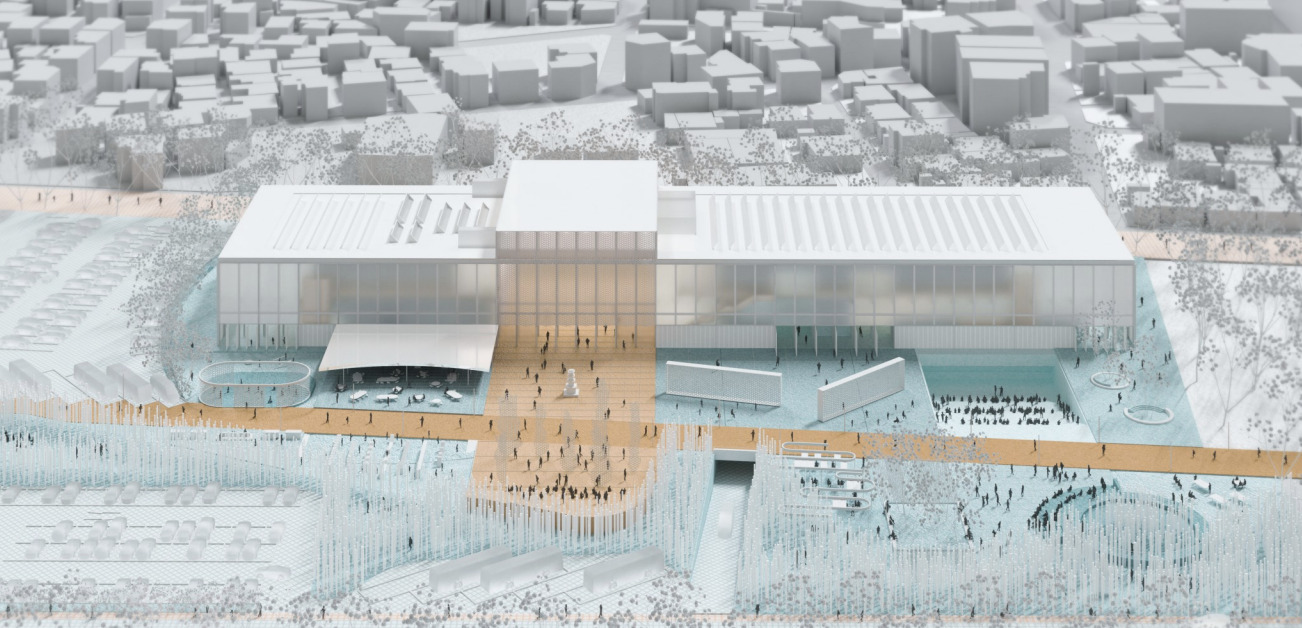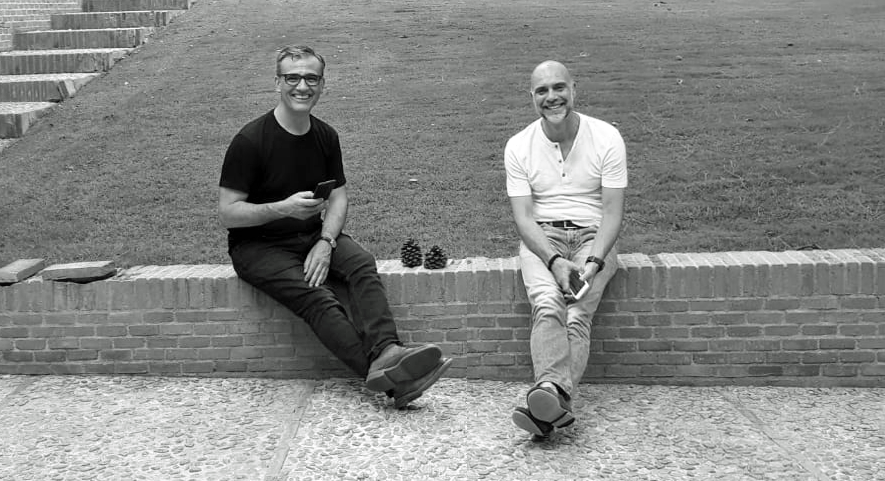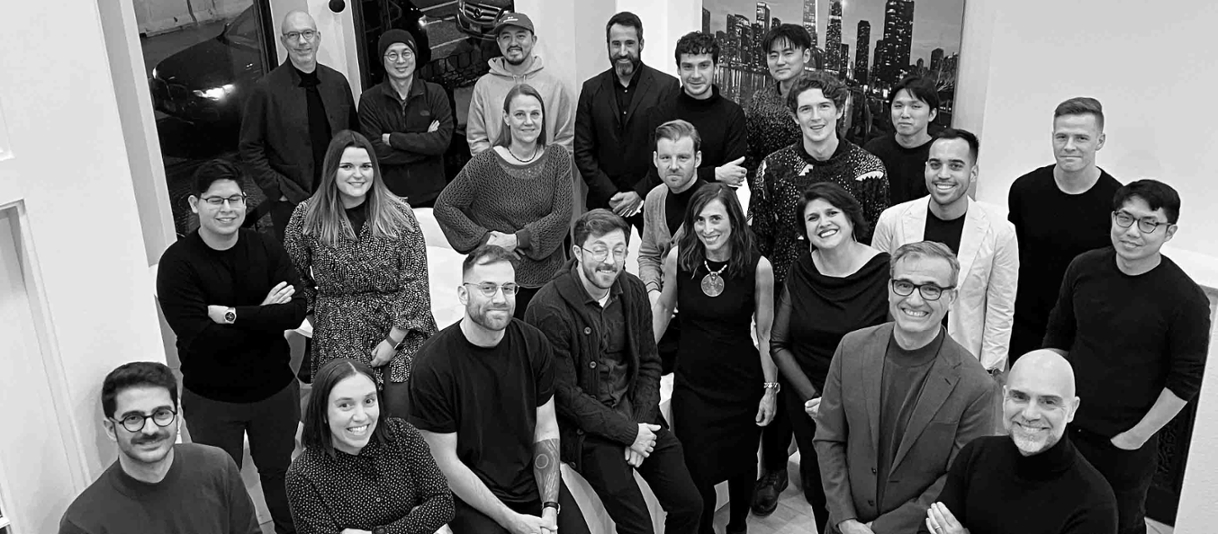AED Program Instructors Awarded First Place in International Design Competition
The Architectural Engineering & Design (AED) minor depends on the enthusiasm and expertise provided by the architectural professionals who spend their time in Northwestern’s classrooms inspiring and educating future architects and engineers.
Two of these instructors, Jose Luis de la Fuente and Luis Collado, are revered not only among students and professors but among colleagues in the architecture world as well.
In July, their firm STL Architects was awarded first prize in the International Design Competition for the new National Museum in Jinju, South Korea. STL Architects partnered with the Korean firm BAUM as local architects on their design. Their proposal invited visitors to reconsider their relationship to nature, the city, and each other – it broke away from the conventional division between interior and exterior, supplying alternative programming possibilities that dissolve the confines of a traditional museum. Their project gracefully harmonizes with nature, embracing Jinju's architectural legacy.

Responding as a team, the pair said that the design of the National Museum is one of their most sustainable projects yet.
“It is certainly our most ambitious project from a sustainability standpoint,” they said. “From the broadest urban design studies querying the relationship between the site and the city to the closest construction details, sustainability is at the center of every decision made in this project. The fluid outdoor/indoor program, the consideration of natural ventilation and natural light, the strong relationship between nature and building, the emphasis on a pedestrian experience, and the materiality, are all interconnected components of the sustainable human experience that is placed at the center of our design.”
Not only is the first-place award meaningful on its own, but the team at STL Architects finds that projects created for design competitions have a way of enriching other projects at the firm.
“Since the earliest days as a firm, we have consistently thrown the hat into the ring of anonymous design competitions,” they said. “Our fee-based commissions rarely provide us with an opportunity to explore new ideas, materials, and methods. Design competitions provide an excellent research & development platform for the team. When one reviews our work chronologically, it is easy to see how new ideas that have been explored in our design competition submissions have found their way into built projects such as Williams Park Field House or the Lycée Française de Chicago. The National Museum in Jinju is our 27th competition entry. Although we have been shortlisted and received awards many times, Jinju will be our first built competition. There is no easy way to explain the incredible sense of accomplishment that our team feels.”
Born in Madrid, Jose Luis and Luis met in Chicago in 1995 while working at Skidmore, Owings & Merrill. Quickly becoming close collaborators and friends, they founded STL Architects a year later. Since then, they’ve seen the field of architecture and design change in innumerable ways.

“We are fortunate to have lived through some of the most transformative moments in history,” they said. “During our college years, we saw the birth of personal computing. During our 30-plus years of professional practice, we have seen an unbelievable transformation of society as the internet reached maturity, desktops lost ground to mobile platforms, print media gave way to multimedia, human connectivity became virtual, and the concern and importance placed on the natural environment went from a sideshow to the main stage of the public arena. Even within the last few months, we have experienced at breakneck speed the birth and imminent maturity of Artificial Intelligence, which could easily dwarf the changes we have seen this far in our industry.”
“It is not an exaggeration to state that we live in a completely different world than the one we lived in when we went to school. It has been - and continues to be - an incredible ride,” they said.
Jose Luis and Luis will teach Studio Design 385-2 during the Winter Quarter. The goal of the course is to create a 68,000-square-foot elementary school in Evanston that serves approximately 400 students. Students will investigate the project site and develop a response to its context and climate. A comprehensive, graphical program analysis will familiarize students with the required educational components. Floor plan drawing studies and 3-dimensional massing models will develop the designs. Students will complete an analysis of their project’s structural system elements with an emphasis on sustainable mass timber.
Both Jose Luis and Luis feel that their involvement in the AED program extends beyond teaching, and requires them to set a good example for students looking to enter the field after graduation.
“Our participation in anonymous architectural competitions, such as the museum in Jinju, sends a message of hope to young architects who could - in the not distant future - participate themselves in these type of project pursuits,” they said. “Our job is to motivate each one of our graduates to believe that, as potential future architects, they have the capacity as well as the unique responsibility to make a positive impact on the built environment. We encourage our students to believe that the strong intellectual academic foundation received at Northwestern allows them to aim high in the persistent pursuit of worthwhile endeavors.”
As for the best part of their job, Jose Luis and Luis both agree that collaborating with talented individuals creates satisfying collective achievement.
“We believe that the discipline of architecture is truly a team sport,” they said. “We often watch people gravitate to ‘what you do’ and ‘how much you make’ as a marker of development. We have substituted those superficial markers with the pleasure of collaborative discovery. Having been through many ups and downs, both on personal and professional fronts, we look back with awe and gratitude at the wonders of the personal connections established with other human beings and the professional growth resulting from it. Nothing beats the joy of collective achievement.”

